#colonial restoration
Photo


I thought for sure this was a European property, but it’s in Myerstown, Pennsylvania and only $519K for a huge, ancient historic home- it was built in 1720!

How can they ask only $519K for this big refurbished home????

B/c Pennsylvania has very reasonable prices for homes. LOOK at this.



Can you believe this kitchen? The old cooking hearth is still here. Plus, they put in beautiful cabinetry. And, look at the ceiling beams.
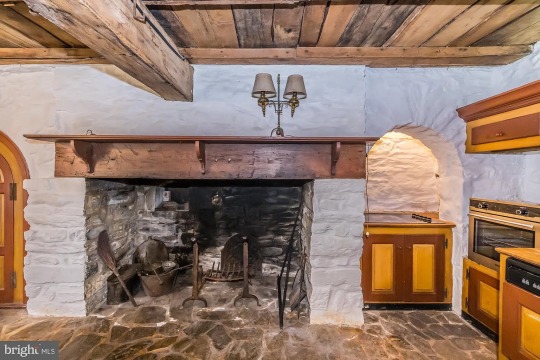
Is this the coolest?


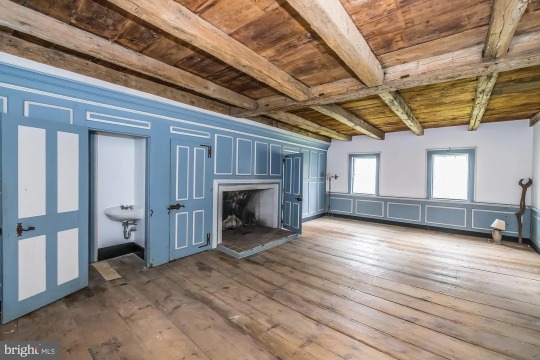
Then check out this Americana style dining room. Whoever restored this home did a great job. This is like a ballroom. Notice the powder room hidden in the closet.

And, it leads to a hidden laundry room.


This room with bath was used as an office. (I guess they went modern in the bath, b/c there wasn’t anything to duplicate back then, not even claw foot tubs or indoor plumbing.)

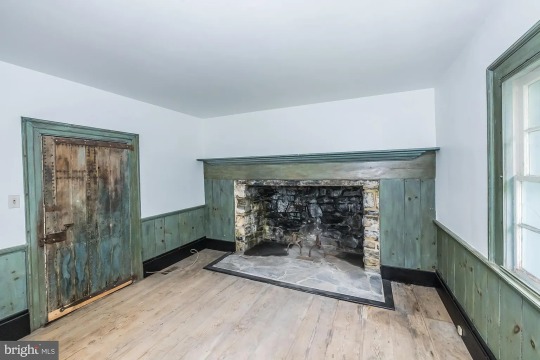
Amazing. Look at the patina on the door and the charring in the fireplace.

Looks like original architecture.


Here’s a gorgeous bedroom. they left all the odd doorways and cubbies.

Another bath.


Beautiful large bright bedroom. I love that they left all the quirkiness- the tiny storage closets, and mazelike structure- look at the little sink.
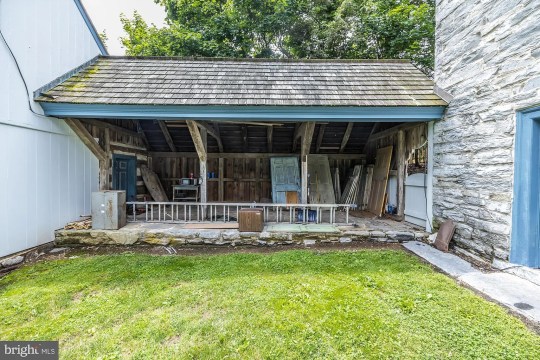
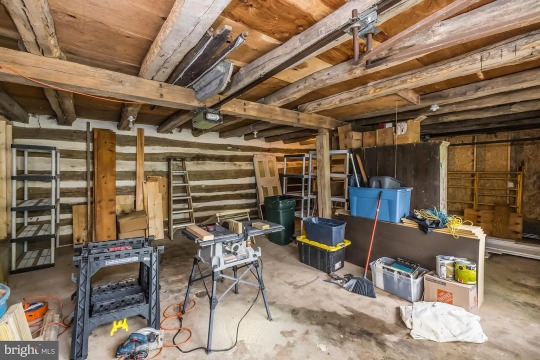
Here’s the workshop that they used to renovate the house.

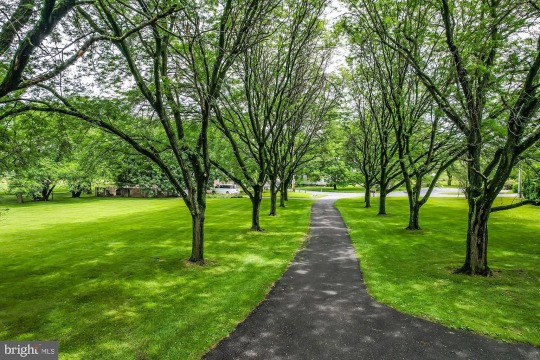
A gorgeous property.
https://www.zillow.com/homedetails/382-N-Locust-St-Myerstown-PA-17067/86536198_zpid/
#colonial americana#historic home#old stone house#colonial architecture#colonial restoration#old house dreams#long post
493 notes
·
View notes
Text
Environmental Generational Amnesia: When We Forget Nature’s Past
Originally posted at my blog at https://rebeccalexa.com/environmental-generational-amnesia/
One of the most traumatic and formative experiences of my life occurred when I was thirteen years old. The woods that I loved exploring behind our yard were completely bulldozed one day; I discovered this when I got off the bus from school. It was part of the destruction of an entire wild area that would become yet another subdivision devoid of trees and vines and wildflowers, with no place left for bobwhite quail or garter snakes in the flat green lawns. I was devastated, and in an attempt to try to help me my mom chatted with the developer when she happened to run into her in town. “She knows how you feel,” my mom said. “Her woods were the ones that were torn down to make the junior high track.” Not only did it just not make sense to me that someone who had been through what I was experiencing would then go on to do the same horrible acts, but it was also my first introduction to the reality of environmental generational amnesia.

The term was coined a few years ago in a paper by Peter Kahn and Thea Weiss. It refers to how each generation considers how it first experienced a place as its true baseline, and any change that comes after it is abnormal or unnatural. So for me, the track at my junior high with just a line of trees along the creek was my understanding of its baseline, but the developer remembered that land as acres of woods. A hundred years ago it may have been a farm. Go back several generations to when only the Osage lived here, and it was probably undamaged oak savanna, or perhaps a tallgrass prairie.
When you multiply that shifting understanding of the “normal” state of a place by all the people in a given area, something is bound to be lost as generations die off, and new ones are born into the present state. Couple that with a serious lack of nature literacy, and you have fewer people discussing what the place is versus what it once was.
In cases where almost all the land has been significantly changed by human activity for centuries, it can be incredibly challenging to piece together what it was like before we came through and wrought such imbalances. The only evidence may remain in a few remote undamaged patches, scraps of partial plant and animal communities, and oral and written information passed down by people, whether indigenous or colonizing. Sometimes ecologists and other scientists need to look at the ecosystems of neighboring areas to get some idea of what might have been here before. It’s often a matter of trying to piece together an incomplete puzzle, giving best educated guesses as to what filled the empty niches.

If you have a population that has a dim memory at best of what a place looked like before it was changed at all, they’re less likely to understand when there’s a problem. I knew, for example, that it was wrong to tear down the woods behind my home, but my baseline was “mix of trees and shrubs of various species surrounding a creek with a limestone bed next to a twenty year old subdivision.” No one could tell me what that farm looked like before it became a farm, and I didn’t understand at the time that the mix of plants and animals I knew and loved were neither the complete original assortment, nor were they all native. How was I to know that my yard was once spacious grassland, dotted with white oak here and there? How should I have come to understand that the woods I had cherished were badly out of ecological balance compared to what had once been, that they were exhibiting signs of recolonization after multiple massive disturbances before I was even born?
And this is just one example of one person’s understanding of one place. This environmental generational amnesia has rippling effects worldwide, with people not understanding that the rivers nearby aren’t supposed to be as stick-straight as they are, that the coastline should be covered in wetlands rather than open sand, that the dense forest is only there because natural fires were suppressed and allowed the trees to take over the last meadows. There are even those who have no idea that their air, water, and soil aren’t supposed to be loaded with pollutants, because pollution is all they’ve known for generations. It’s tough to imagine an extinct wetland when you can’t even see the water for the trash, and the sky is brown instead of blue.
It’s not going to be an easy task to try to revive the collective memory of Lands That Were. A good starting point is to talk to our elders, both alive and dead. When we ask those who still live what they remember of a place, we can glean important details even if they themselves weren’t ecologists, or formal scientists of any other sort. If we can take them to these places and have them show us where important landmarks were and describe what has changed, we can start to see more clearly what’s been lost. And when we read the writings and view the landscape art of those who are long passed, we get important snapshots of what was there long before any of us today were alive, tracing that ecological story closer to its origin.

We also need, more than ever, to preserve what ancient ecosystems still remain, whether that’s old growth forests, or prairies that never knew the tearing of the plow, or wetlands never drained or polluted. We can’t just miraculously replace them in a matter of a few years, and they offer us crucial pictures of the end goal in places where we are attempting long-term habitat restoration. They are living, breathing records of what places looked like before, of the biodiversity and other natural structures that were in place for thousands of years.
Finally, we need to be talking openly about the disconnect between what is and what was. If I, as an incredibly nature-obsessed kid, was startled to think about how my “normal” was only a faint shadow of past ecological glory, then imagine how jarring it must be for someone who is further removed from nature to understand that the forest they walk through is really supposed to be a prairie. (Especially after many years of being told that “planting trees” is the answer to all the ecological problems we face!)
With time and education we can bring about awareness, and that awareness will help us make better decisions for the future. There are so many people who want to undo ecological destruction and make the world a better place; we just need to have better, more accurate information out there on what can be reasonably done. Much of that hinges on having a clearer idea of what’s been lost, so that we can make plans to save whatever is left, and restore as much as we can.
Did you enjoy this post? Consider taking one of my online foraging and natural history classes, checking out my other articles, or picking up a paperback or ebook I’ve written! You can even buy me a coffee here!
#long post#ecology#habitat restoration#environment#environmentalism#conservation#nature#science#scicomm#colonialism#wildlife#natural history#outdoors#activism#climate change#climate activism#ecopsychology#conservation psychology
2K notes
·
View notes
Text
Climate Solutions; A warning
—
1. Be wary of anyone giving simple answers.
2. Be wary of anyone whose solutions prioritize human wellbeing over the rest of existence.
3. Be wary of anyone whose solutions would destroy humanity and our relationships to nature.
4. Be wary of anyone whose solution is to further extraction, further power, further destruction, and further colonization.
5. Be wary of anyone whose solutions rely on technology that has not been invented yet.
6. Be wary of anyone who is trying to sell you something.
There is wisdom to be found in all places. Don’t dismiss anyone out-of-hand. But be thoughtful, be measured, and verify, no matter the source.
13 notes
·
View notes
Text
it's genuinely so fun to see so many people come to the conclusion that Palestine has been oppressed for exactly 75 years
and by fun I mean fucking terrifying what is wrong with people
#oh wow 75 whole years#such a brave movement to restore the land to the indigenous inhabitants who were definitely in charge 75 years ago#tumblr stop huffing actual propaganda challenge#there are a lot of nuances and complexities in the Israel/Palestine conflict but a second British colony is not the answer#typical American behavior I guess#Jumblr#politics#I ramble
9 notes
·
View notes
Text
It is extremely apparent that the politics of the majority of Western left are based far more on finding acceptable targets than any interest in learning about and uplifting the downtrodden.
The Second World War was never about rescuing Jews or opposing Nazism; that was a happy side effect that has since been used to rewrite history with the Allied as liberators of the oppressed rather than self-interested genociders themselves who were responsible for the rise of Nazism. Your "punch Nazis" rhetoric is simply buying into the mythology of USAmerican imperialism that conveniently glosses over the fact that they never gave a single shit about Jews before or since, that their beef was with the Japanese, and that they nuked 200,000 human beings and disabled their children for generations.
Protecting, decentering, learning, uplifting the vulnerable, and practicing compassion instead of pursuing punitive justice, is the project of social justice. If you're in it to "punch Nazis", "eat the rich", and "fuck terfs", you're just a useless self-serving shithead who just wants an excuse to visit violence on somebody without consequence. By the time the only defence against Nazis is to punch them, it's already too late for their victims.
#social justice#anti-semitism#genocide#world war ii#nazism#colonialism#american imperialism#propaganda#racism#classism#trans rights#western leftists#punitive justice#restorative justice#knee of huss
41 notes
·
View notes
Note
if prison abolition was a thing, what would we do about male violence? even in rich circles, it is still a huge issue, so solving poverty wouldn't mean an end to it. even when all living conditions are fulfilled perfectly, there will still be men who seek to violate women. should r*pists and femicide murderers be "rehabilitated" somewhere they are allowed to leave? isn't somewhere they aren't allowed to leave still a prison in some form? wouldn't it be better labelled as prison reform, not prison abolition? do we really want murderers and r*pists to be roaming free, free of consequences? or should their houses be labelled as "s*xual offender" or "murderer" so that people in the neighborhood are at least vigilant around them? but then wouldn't that be a big struggle for families and households with women who often wouldn't be able to afford moving if they were uncomfortable with having a literal convicted r*pist or murderer next door...? i'm just curious what your actual thoughts would be. and if you say "just read xyz book" i'd appreciate at least to be told specific pages to read, same as naming a youtuber. i'd prefer a video in general on the topic but only if it genuinely answers my questions and isn't just "the alternative sucks"
when talking about prison abolition, we have to keep in mind that an actual prison abolitionist understands that this is a severely complex & nuanced subject– and that no person who is actually well-informed on the topic is going to claim to want to destroy all prisons & let all criminals out overnight.
1. “what will we do about male violence?”– let me flip the question for you; what are we doing about male violence now? we have been taught that prison is the only viable solution, but it really is not. if prions are, in any way, shape, or form, helping reduce recidivism rates, then why is america, a country with immensely high numbers of incarnated people, so dangerous & unsafe; and why are the numbers of criminals only increasing? the legal system, besides also being morally corrupt otherwise, is also extremely anti-woman; it has a very-well preserved reputation & tradition with letting rapists, femiciders & men who commit domestic violence get away with very light consequences, and in some cases, scot free. in other words, the legal system/police system/prison institution, are all anti-feminist & do nothing to address male violence, unfairly favor men, and on top of it– they do nothing productive & useful for neither the victim, the offender, nor the community as a whole. prisons are a site of violence & abuse– they are a distillation of white supremacy & imperialism; indigenous people & people of color are more likely to be incarnated, and unfairly as well. modern prisons have their roots in colonial structures, and have undoubtedly kept the kinds of cruel & unjust punishments that the colonial powers imposed & enforced on their victims.
2. “wouldn’t it be better to advocate for prison reform, rather than prison abolition?” no– because the prison system is not a fit case for reform. the prison system is one rotten at the core, mere reform would not be capable of fixing it. it was created to instill fear & cruelty, attempting to operate within such a system in a healthy society would just not work. we cannot claim to be against oppressive superstructures, if we support the exact same grounds they were built on, and the materials they were built from.
3. “how exactly does prison abolition work?” when we talk about prison abolition, we have to also be talking about the alternatives to prison– rehabilitative, restorative, and transformative justice. restorative justice majorly operates because it has the victim’s needs at heart– for restorative justice to work sufficiently, the offender has to engage directly with the victim & actively work on repairing harm. restorative justice does not work simply on the basis of “setting the offenders free”– that is a fallacy created by people who do not understand the truths of prison abolition. restorative justice works depending on various factors– the environment, the person, surroundings, etc.– but its sufficiency is not decided on the type of crime committed. it can work as well on violent crime as it does on nonviolent crime. community service, victim-offender dialogue, and other types of restoration that have the victim’s needs at heart first & foremost– are all tactics advocated by prison abolitionists. the prison system does not do anything for the community as a whole, neither– incarnating a single perpetrator does not reduce crime. abolitionists understand that harm will happen regardless, our goal is to reduce harm– and of course, as a person currently majoring in sociology– i work to understand the human mind, and i am interested in other projects & movements beyond prison abolition, that can work together with prison abolition in sync to rehabilitate society as a whole. colonial values are built in every aspect of our society, and to dismantle them, we have to acknowledge they are present in the activist & progressive movements we choose to support, as well– decolonizing feminism, leftism, veganism & other social movements is crucial. decolonial feminism is anti-carceral. the transitory period between a carceral & non-carceral state remains uncertain, but prison abolition is currently an experiment.
4. how would i incorporate prison abolition with feminism & leftism?– i know this isn’t a question you asked, but i would like to mention it, as well. i am an advocate for revolutionary feminism & revolutionary leftism– not reformist feminism & leftism. aside from my prison abolitionist views, i believe in arming all working-class people, and i believe in arming proletarian women especially. i believe that, for a proletarian revolution to be successful, we have to put a special emphasis on the woman worker. simply destroying capitalism won’t liberate women, although an end of capitalism is needed for female liberation. an end of all sexist practices, and an end of misogynistic thoughts & beliefs on a worldwide scale– will require exhausting labor from the entirety of society. i believe that reeducation camps & centers fall under the rehabilitative category, and i do not believe that restorative justice is inherently peaceful & calm. we do not beg and plead with oppressors to stop oppressing. justified violence is helpful, but the prison system only harms the oppressed, and is violent in a cruel, injustifiable way.
5. as for the sources, i can direct you to some that have personally helped me.
1.) Colonialism VS Coloniality
2.) What is Abolition?
3.) documentaires: 13th, They Call Us Monsters, Just Mercy, Cointelpro 101
#prison abolition#radical feminism#anti capitalism#radblr#anti prison#radical feminist theory#colonialism#restorative justice#decolonial feminism#gender critical#gender abolition#ask
5 notes
·
View notes
Text
"Remember it's okay to criticize Israel as long as you're not antisemitic about it" Yeah thanks, tumblr user with a tag labeled "antizionism is antisemitism", you seem like an unbiased source of what is and isn't acceptable criticism. Do you - oh, you already posted that it's not Israel's fault that Hamas is hiding weapons in civilian locations, cool, that's cool -
#i am just. so sick of zionists right now#it's weird that i'm pretty sure some of these same people were posting about American landback movements#and how they're not complicated and not violent and how your personal comfort shouldn't figure in#to restoring the rights of the people whose land you took#but now all of a sudden settler colonialism is a really complicated problem actually; there's so much to consider; really who knows#and like. they're not wrong! it IS a complicated problem without a good solution!#it's just that it's weird that it WASN'T complicated when we were talking about a country with no active resistance#and therefore no need to ACTUALLY abide by your own self-proclaimed ideals
11 notes
·
View notes
Text

Balmain Watch House (1854). One of the very oldest buildings still standing in the Inner West. Designed by Chief Colonial Architect Edmund Blacket and built of Sydney Sandstone. Original top storey replaced in 1881. Remained a police lock-up until 1925. Then became the home of the local Police Sergeant until 1944. Later fell into dereliction and badly damaged by fire and vandals; earmarked for demolition before being saved and restored by local community groups in the 1980's. Now an exhibition space for hire. Heritage Listed. Balmain.
#heritage#vintage#victorian era architecture#colonial lock up#watch house#cop shop#old police station#restored#it's a sign#facade#streetscape#sydney sandstone#inner west sydney
66 notes
·
View notes
Text
NOIR CITY Philadelphia This Friday

Join us for our first NOIR CITY: Philadelphia this weekend, July 21-23, The Colonial Theatre located in the historic business district of Phoenixville, Pennsylvania. The three-day extravaganza will feature nine films from the heart of Hollywood's noir movement: the year 1948, plus the FNF-funded restoration of WOMAN ON THE RUN (1950).

The 1948 screenings include conventional noir classics like Orson Welles' THE LADY FROM SHANGHAI, Anthony Mann's RAW DEAL, and John Farrow's THE BIG CLOCK, as well as two supernatural noirs – George Sherman's THE SPIRITUALIST and, based on the novel by Cornell Woolrich, Farrow's NIGHT HAS A THOUSAND EYES. The festival closes with Preston Sturges' noir-tinged dark comedy, UNFAITHFULLY YOURS. FNF founder and president Eddie Muller will introduce all the films.

Beginning at noon on Saturday, Eddie will be signing copies of his latest book, EDDIE MULLER'S NOIR BAR – COCKTAILS INSPIRED BY THE WORLD OF FILM NOIR, in The Colonial Theatre's Garden Suite. The day's first film, LARCENY, will begin at 2:00 pm. Eddie will also have copies of his book DARK CITY: THE LOST WORLD OF FILM NOIR available for sale. Pre-signed copies of both books will be available all weekend at The Colonial Theatre's merchandise store.
→ Film schedule and tickets for double features or single films are available here.
#eddie muller#film noir foundation#noir city#noir city Philadelphia#film noir festival#film noir#film restoration#noir bar#the colonial theatre
12 notes
·
View notes
Text

FAR, FAR AWAY
Years ago I met a man who told me he was from Côte d'Ivoire and those words, uttered on a frigid Sunday morning on a street corner in midtown, conjured up a fantasy of Africa, a romance of the continent, almost entirely uninformed, that remains with me.
The words Angkor Wat do the same.
I know little about the twelfth-century temple complex in Cambodia. I've seen grainy nineteenth-century photographs and talked with architects who've visited. I remember the gorgeous footage from In the Mood for Love, in which Hong Kong film start Tony Leung wanders the grounds alone, in silence, running his hands along the stone, summoning a long-ago heartbreak that will shadow his entire life. The place obliges. It's sensual and severe, ancient and embracing, with chambers and corners in which to hide.
A smart video from the Worlds Monuments Fund goes a way to dismiss the romanticism. Drone footage highlights the vastness of the site and its lush watery surrounds. The camera lingers over piles of giant stone blocks, which are being reset after structural reinforcing and waterproofing work is completed. There's a discussion of the enormous fig tree whose roots straddle the roof at Ta Prohm like tentacles, with the promise that both structure and tree will be preserved. There are interviews with engineers and artisans carrying out the restoration work, which seems terribly pragmatic.
Then there's a pan shot of Churning of the Ocean of Milk, the iconic bas relief depicting that episode in Hindu mythology, with phalanxes of demons and angels stirring up the elixir of everlasting life, amrita. Right then the dream of Angkor Wat re-emerges. We see these creatures carved, life-size (that is, at the size of human adults), compressed in dramatic repetition, rendered richly within an inch of the surface of stone, a work of delirious craft and precision. What men carved these stones, through how many years, and what thoughts, what songs, were with them as they worked?
Longing for a place requires knowing something about it while at the same time knowing nothing. Can one understand a place correctly and remain enchanted by it? I want to see Angkor Wat and also hold onto my fantasy of that place.
Photograph by Émile Gsell, 1866.
3 notes
·
View notes
Text
The vast majority of the left has repidly devolved into accelerationists, authoritarians, and sccelrationist authoritarians. Ideologies we used to all rightfully know are actually terrible praxis.
And the worst part is basically no one seems to care.
#my post: shadow#like holy shit#tankies are like half the left on this website suddenly#half of the rest are willing to platform and reblog from them because they post the right feeling things about one or two specific issues#or especially God forbid anyone from another country points#antisemitism has exploded#pro-facist and colonial powers worship had exploded as long as those powers didnt like the “west”#people literally willing to let the us and similar states devolve into right wing facism and leaders who have openly called for genocide so#to “teach” the liberals a lesson#or “jumo start the revolution”#like it's nuts#you all dont even understand actually leftist theory or beliefs#youve all immediately abandonded restorative and rehabilitative justice when you can get blood instead#youve abandoned any real sense of landback unless its able to be weaponized by white authrotatian commies#youve abanonded the global south except when their pawns for you#huge ranges if yall are literally compnaining about democracy being unethical#like wtf is wrong with you people#like you usamericans have a guy whos got a year plan to enact a nazis facist overtake of the country#and has openly discussed the like 6 different minorities he plans to start genociding day fucking one#and half of you are like “well the other guy isnt aggressive enough about ending shit he diesnt have power over#and so imma geasture in the nazis rather then spend 5 minutes voting to keep him out“#and then throw a bitch fot when anyone from your own backass country#points it out#you bitch about imperilism and America centrism and cultural imperialism#and that you demand and force activists and discussion in the rest of the world to use your specific qnd often specific to your issues view#of race#of ethnicity#culture and imperlism and indigenous and religion and everything else#even when it doesnt make sense#even when its actively harmful
6 notes
·
View notes
Photo

I would never have expected this house to look like it does inside. It was built in 1880, but it’s been restored and still retains a lot of original features. Located in Stockbridge, Massachusetts. 4bd. 2.5ba. $895K.


Look at this ceiling. I never expected this. But, then again, look at how high up the fireplace goes.


The kitchen is almost completely original- they didn’t install any new cabinets and the floors are the orignal wide planks.
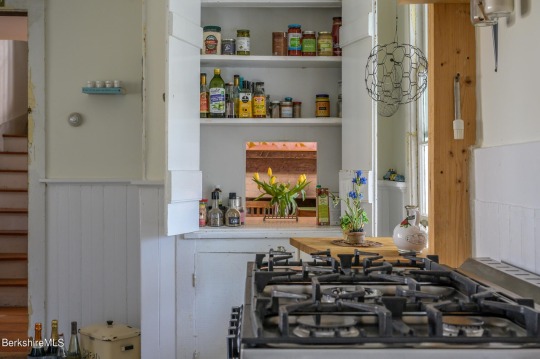
Look at this- the original cabinet has little service window inside.

This is what it looks like on the other side. How cute is this?
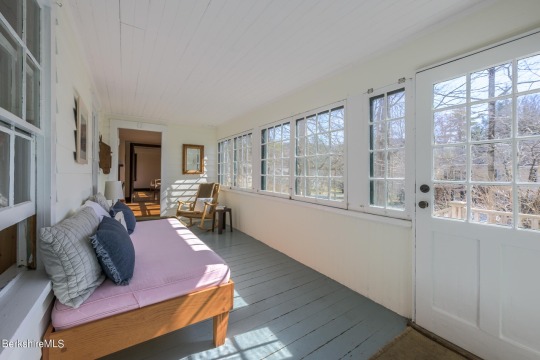
Very nice back porch. Look at how large it is.
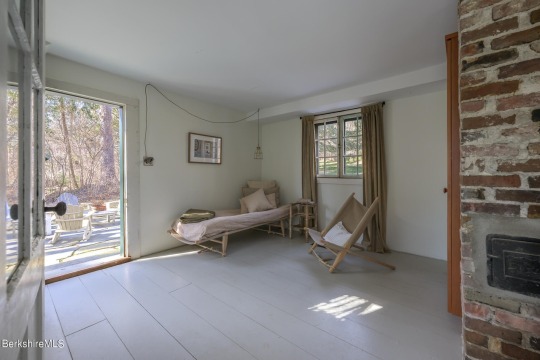

In this back room is a refurbished heat chimney, but they kept the orignal door.

This is a nice room- could be a studio, an office, there are many options.


The main stairs. Look at the original worn newel post.

The main bedroom was given this wonderful ceiling.

Lovely vintage bath.

It has a sunny laundry room.


Original 2nd staircase.

This is a very nice, sunny bedroom.

And, the 2nd vintage bath.

The back of the house looks so pretty and there’s a patio with a nice sized yard.
https://www.redfin.com/MA/Stockbridge/9-Yale-Hill-Rd-01262/home/135151291
181 notes
·
View notes
Text
Liam is in Port Carnelian and he is having suuuch a hard time keeping up any respectable amount of imperial legitimacy. He is like is “yes I do think you should be able to participate in your cultural customs, and be treated with dignity and respect :)” and the Foreign Office does not like it.
He hates being called Governor. He’s learning to just keep his mouth shut and go sit quietly at the tiger assembly or tea shop, and wait until he’s served enough terms to go home. (Unless His Amused Lordship comes around and they can go partying together for a little boost of legitimacy)
#honestly though there should be an alternative to being restored to court that doesn’t involve uhhh#forcing the pc to participate in blatant colonialism#oc: the cursed balladeer
3 notes
·
View notes
Text
This family is our fortress [not our collective family among the Omatikaya who were willing to fight to the end for their sovereignty and had Eywa's help on speedial. Nope].

#i really hope neytiri is the one who restores everything#Jake is so patriarchal and colonial hes insufferable#oel.mine#jake sully#omatikaya
12 notes
·
View notes
Photo
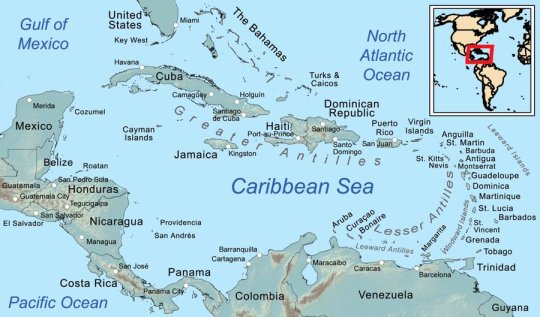
the mediterranean sea of the future
#our sacred duty is to set up colonies on every island we can#venezuela will be our troy#we will liberate cuba#filibustering and hero cults and adventures worth writing epic poems about#we will restore gran colombia#state issued daily coffee#techno-oracle prophecies#futurist free corps#stalking through the jungles hunting for narco and commie scalps#to fulfil state sanctioned bounties#roving fleets of pirates sanctioned by letters of marque#modern day sea peoples#tropical island homesteading#pirate republic cyberpunk mega-city-states
19 notes
·
View notes
Text
International Day of the World’s Indigenous Peoples: Reflecting on the Past, Embracing the Future

View On WordPress
#Art and Reconciliation#Art as History#Art as Resistance#Art Exhibitions#Artistic Documentation#Artistic Expression#Artistic Narratives#Autonomy#Canada#Carey Newman#Clearing the Plains#Colonial Impact#Colonial Policies#Colonial Trauma#colonization#Community Healing#community well-being#Cultural Continuity#Cultural Disruption#Cultural Healing#CULTURAL HERITAGE#Cultural Loss#Cultural Loss Recovery#Cultural Preservation#Cultural Recovery#Cultural Restoration#cultural revitalization#cultural stories#Disease Epidemics#Disease Impact
0 notes